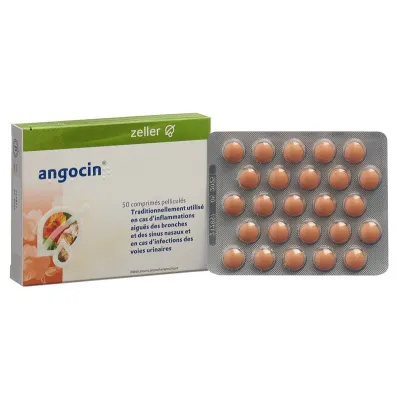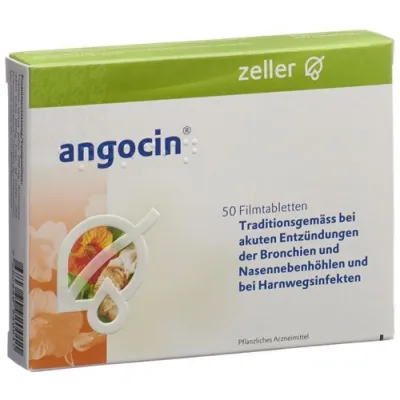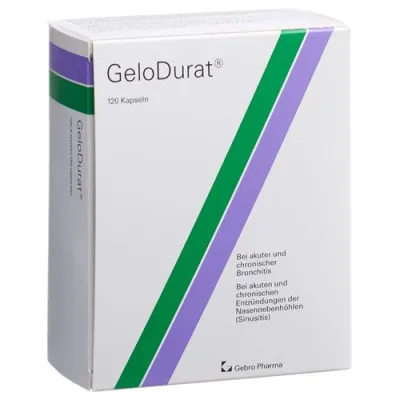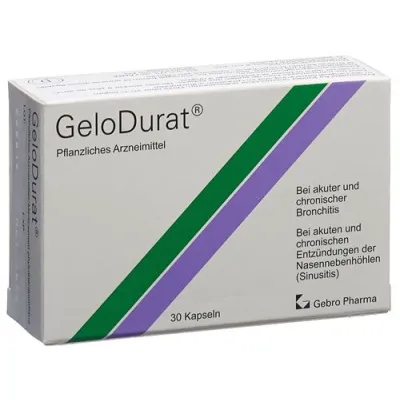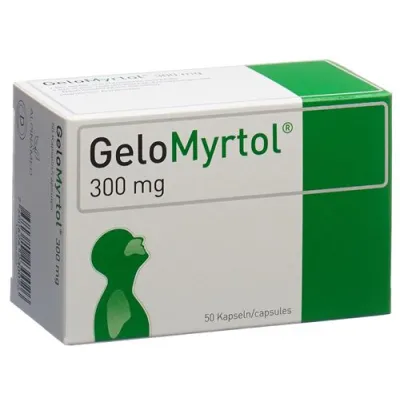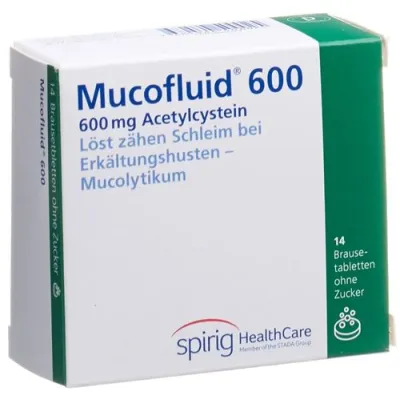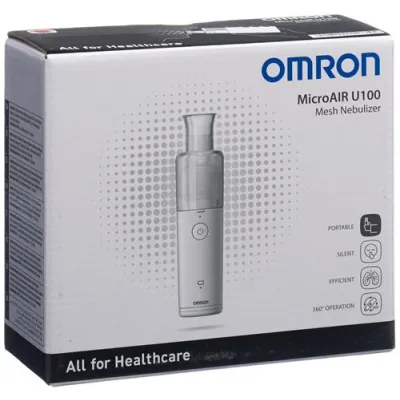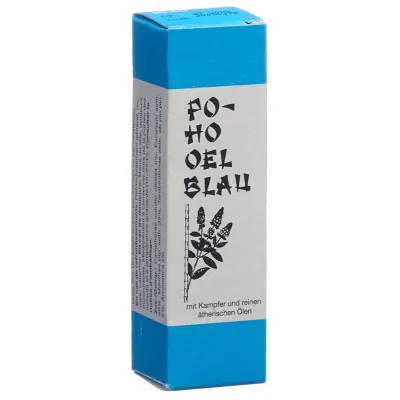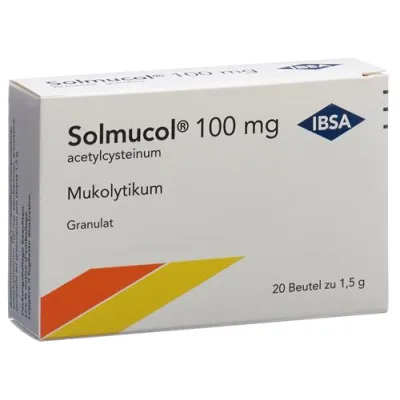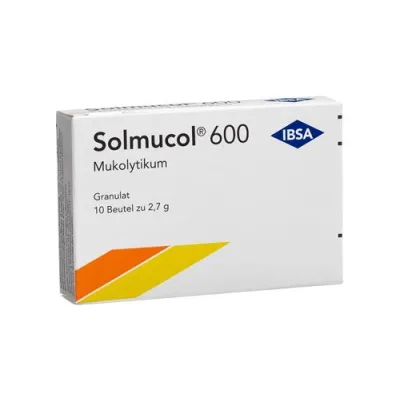bronchitis treatment
(1 Pages)
Angocin film tablets
Inhaltsverzeichnis Was ist Angocin und wann wird es angewendet? Was sollte dazu beachtet werden? Wann darf Angocin nicht oder nur mit Vorsicht eingenommen werden? Darf Angocin während einer Schwangerschaft oder in der Stillzeit eingenommen werden? Wie verwenden Sie Angocin? Welche Nebenwirkungen kann Angocin haben? Was ist ferner zu beachten? Was ist in Angocin enthalten? Zulassungsnummer Wo erhalten Sie Angocin? Welche Packungen sind erhältlich? Zulassungsinhaberin COMPENDIUM Swissmedic-genehmigte Patienteninformation Angocin®, Filmtabletten Max Zeller Söhne AG Pflanzliches Arzneimittel Was ist Angocin und wann wird es angewendet? Angocin ist ein Arzneimittel mit Kapuzinerkressenkrautpulver und Meerrettichwurzelpulver. Angocin wird angewendet:traditionsgemäss zur Besserung von Beschwerden bei akuten Entzündungen der Bronchien und Nasennebenhöhlen;traditionsgemäss bei weiblichen Erwachsenen mit Beschwerden bei Harnwegsinfekten. Was sollte dazu beachtet werden? Zur Anwendung bei Beschwerden bei akuten Entzündungen der Atemwege: Bei Beschwerden, die länger als eine Woche anhalten oder beim Auftreten von Atemnot, Fieber wie auch bei eitrigem oder blutigem Auswurf sollte ein Arzt bzw. eine Ärztin aufgesucht werden.Zur Anwendung bei Beschwerden bei Harnwegsinfekten: Bei Blut im Urin, bei Fieber oder bei Anhalten der Beschwerden über 5 Tage sollte ein Arzt bzw. eine Ärztin aufgesucht werden.Harnwegsbeschwerden von Kindern und Jugendlichen unter 18 Jahren sowie männlichen Erwachsenen und Schwangeren gelten grundsätzlich als kompliziert, bedürfen einer ärztlichen Abklärung und dürfen nicht mit Angocin behandelt werden (siehe auch unter «Wann darf Angocin nicht oder nur mit Vorsicht eingenommen werden?»)Der Wirkstoff Kapuzinerkressenkrautpulver enthält Vitamin K. Bei gleichzeitiger Einnahme von Angocin mit gerinnungshemmenden Arzneimitteln (sogenannter Vitamin K-Antagonisten) kann nicht ausgeschlossen werden, dass die Wirkung dieser gerinnungshemmenden Arzneimittel beeinträchtigt wird. Bei Einnahme der genannten gerinnungshemmenden Arzneimittel (z.B. Marcoumar oder Sintrom oder andere Produkte mit diesen Wirkstoffen) wird daher empfohlen, den Quickwert bzw. INR-Wert engmaschig zu kontrollieren bzw. kontrollieren zu lassen und mit dem behandelnden Arzt resp. der behandelnden Ärztin Rücksprache zu nehmen.Bei Kindern von 6 bis 12 Jahren mit Beschwerden bei akuten Entzündungen der Atemwege soll Angocin nur nach Rücksprache mit einem Arzt bzw. einer Ärztin angewendet werden.Die Anwendung von Angocin bei Kindern unter 6 Jahren wurde nicht ausreichend untersucht. Es soll deshalb bei dieser Altersgruppe nicht angewendet werden. Wann darf Angocin nicht oder nur mit Vorsicht eingenommen werden? Angocin darf nicht eingenommen werden,bei Überempfindlichkeit gegenüber Kapuzinerkressenkraut, Meerrettichwurzel oder einem der Hilfsstoffe dieses Arzneimittels (s. «Was ist in Angocin enthalten?»),wenn Sie unter akuten Magen- und Darmgeschwüren leiden,wenn Sie unter akuten Nierenentzündungen leiden,wenn Sie schwanger sind.Harnwegsbeschwerden von Kindern und Jugendlichen unter 18 Jahren sowie männlichen Erwachsenen und Schwangeren gelten grundsätzlich als kompliziert, bedürfen einer ärztlichen Abklärung und dürfen nicht mit Angocin behandelt werden (siehe unter «Was sollte dazu beachtet werden?»)Informieren Sie Ihren Arzt, Apotheker oder Drogisten bzw. Ihre Ärztin, Apothekerin oder Drogistin, wenn Siean anderen Krankheiten leiden,Allergien haben oderandere Arzneimittel (auch selbstgekaufte!) einnehmen! Darf Angocin während einer Schwangerschaft oder in der Stillzeit eingenommen werden? Wenn Sie schwanger sind oder stillen, oder wenn Sie vermuten, schwanger zu sein oder beabsichtigen, schwanger zu werden, fragen Sie vor der Einnahme dieses Arzneimittels Ihren Arzt, Apotheker oder Drogisten bzw. Ihre Ärztin, Apothekerin oder Drogistin um Rat.Aus grundsätzlichen medizinischen Erwägungen darf keine Behandlung in der Schwangerschaft erfolgen (siehe unter «Was sollte dazu beachtet werden?» und «Wann darf Angocin nicht oder nur mit Vorsicht eingenommen werden?»).Für Angocin gibt es noch keine ausreichenden Daten über eine Verwendung während der Schwangerschaft. Es ist nicht bekannt, ob die Wirkstoffe von Angocin in die Muttermilch übergehen. Das Arzneimittel soll daher während der Schwangerschaft und während der Stillzeit nicht angewendet werden. Wie verwenden Sie Angocin? Beschwerden bei akuten Entzündungen der AtemwegeFalls vom Arzt bzw. von der Ärztin nicht anders verordnet:Erwachsene und Jugendliche über 12 Jahre3-5 mal täglich 4-5 Filmtabletten (Standarddosis: 3 mal täglich 4 Filmtabletten)Kinder von 6 bis 12 Jahren nur auf Anweisung des Arztes bzw. der Ärztin3-4 mal täglich 2-4 Filmtabletten (Standarddosis: 3 mal täglich 3 Filmtabletten)Beschwerden bei HarnwegsinfektenWeibliche Erwachsene ab 18 Jahre (eine Schwangerschaft muss ausgeschlossen sein)3-5 mal täglich 4-5 Filmtabletten (Standarddosis: 3 mal täglich 4 Filmtabletten).Nehmen Sie die Filmtabletten bitte unzerkaut mit ausreichend Flüssigkeit nach den Mahlzeiten ein.Angocin sollte nicht länger als zwei Wochen eingenommen werden.Halten Sie sich an die in der Packungsbeilage angegebene oder vom Arzt bzw. von der Ärztin verschriebene Dosierung. Wenn Sie glauben, das Arzneimittel wirke zu schwach oder zu stark, so sprechen Sie mit Ihrem Arzt, Apotheker oder Drogisten bzw. mit Ihrer Ärztin, Apothekerin oder Drogistin. Welche Nebenwirkungen kann Angocin haben? Wie alle Arzneimittel kann auch dieses Arzneimittel Nebenwirkungen haben. Bei Angocin wurden folgende Nebenwirkungen beobachtet:Häufig: Magen- und Darmbeschwerden wie Übelkeit, Oberbauchdruck, Durchfall, Blähungen oder Sodbrennen.In diesem Fall empfehlen wir, die Dosis zu reduzieren. Wenn die Beschwerden dennoch weiterbestehen, sollten Sie das Arzneimittel absetzen und mit Ihrem Arzt bzw. Ihrer Ärztin sprechen.Gelegentlich: Allergische Reaktionen, die den ganzen Körper betreffen sowie Überempfindlichkeitsreaktionen der Haut (z.B. Hautrötungen mit Hitzegefühl, Hautausschlag und/oder Juckreiz).In diesem Fall sollten Sie das Arzneimittel sofort absetzen und umgehend einen Arzt bzw. eine Ärztin aufsuchen.Wenn Sie Nebenwirkungen bemerken, wenden Sie sich an Ihren Arzt, Apotheker oder Drogisten bzw. Ihre Ärztin, Apothekerin oder Drogistin. Dies gilt insbesondere auch für Nebenwirkungen, die nicht indieser Packungsbeilage angegeben sind. Was ist ferner zu beachten? Das Arzneimittel darf nur bis zu dem auf dem Behälter mit «EXP» bezeichneten Datum verwendet werden.LagerungshinweisNicht über 30 °C lagern und ausser Reichweite von Kindern aufbewahren.Weitere HinweiseWeitere Auskünfte erteilt Ihnen Ihr Arzt, Apotheker oder Drogist bzw. Ihre Ärztin, Apothekerin oder Drogistin. Diese Personen verfügen über die ausführliche Fachinformation. Was ist in Angocin enthalten? Wirkstoffe1 Filmtablette enthält: Kapuzinerkressenkrautpulver 200 mg, Meerrettichwurzelpuver 80 mgHilfsstoffeCellulose, Hypromellose, Kartoffelstärke, Macrogol, Natriumcarboxymethylstärke, hochdisperses Siliciumdioxid, Stearinsäure, Talkum, Farbstoffe (Eisenoxide und -hydroxide E 172, Titandioxid E 171) Zulassungsnummer 66092 (Swissmedic) Wo erhalten Sie Angocin? Welche Packungen sind erhältlich? In Apotheken und Drogerien, ohne ärztliche Verschreibung.Packungen mit 50, 100 und 200 Filmtabletten. Zulassungsinhaberin Max Zeller Söhne AG, 8590 Romanshorn Diese Packungsbeilage wurde im November 2017 letztmals durch die Arzneimittelbehörde (Swissmedic) geprüft. 28535 / 21.05.2020 ..
136.02 USD
Angocin film tablets 50 pcs
Angocin is a medicine containing nasturtium herb powder and horseradish root powder. Swissmedic-approved patient informationAngocin®, film-coated tabletsMax Zeller Söhne AGHerbal medicinal product What is Angocin and when is it used?Angocin is a medicine containing nasturtium herb powder and horseradish root powder. Angocin is applied:Traditionally used to improve symptoms of acute inflammation of the bronchi and paranasal sinuses;Traditionally used in female adults with symptoms of urinary tract infections. What should be considered? For use in symptoms of acute inflammation of the respiratory tract: For symptoms that last longer than a week or if shortness of breath occurs, fever such as A doctor should also be consulted if there is purulent or bloody sputum. For use in symptoms of urinary tract infections: A doctor should be consulted if there is blood in the urine, fever or if the symptoms persist for more than 5 days. Urinary tract problems in children and adolescents under the age of 18, as well as male adults and pregnant women, are generally considered to be complicated, require medical evaluation and must not be treated with Angocin (see also "When should Angocin not be taken or should only be taken with caution?"). The active ingredient nasturtium herb powder contains vitamin K. If Angocin is taken at the same time as anticoagulant drugs (so-called vitamin K antagonists), it cannot be ruled out that the effect of these anticoagulant drugs will be impaired. When taking the anticoagulant drugs mentioned (e.g. Marcoumar or Sintrom or other products with these active ingredients), it is therefore recommended to check the Quick value or INR value closely or have it checked and to consult the doctor or nurse in charge. to consult the treating doctor. In children aged 6 to 12 years with symptoms of acute inflammation of the airways, Angocin should only be used after consulting a doctor. The use of Angocin in children under 6 years of age has not been adequately studied. It should therefore not be used in this age group. When should Angocin not be taken or only with caution?Angocin should not be taken, if you are hypersensitive to nasturtium herb, horseradish root or any of the excipients of this medicine (see «What does Angocin contain?»),if you suffer from acute gastric or intestinal ulcers,if you suffer from acute kidney inflammation,if you are pregnant.Urinary tract problems in children and adolescents under the age of 18 as well as male adults and pregnant women apply in principle as complicated, require a medical examination and must not be treated with Angocin (see under «What should be considered?») Tell your doctor, pharmacist or druggist if you suffer from other diseases,have allergies ortake other medicines (including those you bought yourself!)! Can Angocin be taken while pregnant or breastfeeding?If you are pregnant or breastfeeding, think you may be pregnant or are planning to have a baby , ask your doctor, pharmacist or druggist for advice before taking this medicine. For fundamental medical reasons, no treatment should be carried out during pregnancy (see "What should be considered?" and "When should Angocin not be taken or should only be taken with caution?"). Angocin does not yet have adequate data on its use during pregnancy. It is not known whether the active substances in Angocin are excreted in human milk. The drug should therefore not be used during pregnancy and breast-feeding. How do you use Angocin?Complaints with acute inflammation of the respiratory tractIf prescribed by a doctor not otherwise prescribed: Adults and adolescents over 12 years4-5 film-coated tablets 3-5 times a day (standard dose: 4 film-coated tablets 3 times a day) Children from 6 to 12 years only on the doctor's orders2-4 film-coated tablets 3-4 times a day (standard dose: 3 film-coated tablets 3 times a day) Complaints with urinary tract infectionsFemale adults over the age of 18 (pregnancy must be ruled out)3-5 times 4-5 film-coated tablets daily (standard dose: 4 film-coated tablets 3 times a day). Please take the film-coated tablets whole with sufficient liquid after meals. Angocin should not be taken for more than two weeks. Follow the dosage given in the package leaflet or as prescribed by your doctor. If you think the medicine is too weak or too strong, talk to your doctor, pharmacist or druggist. What side effects can Angocin have?Like all medicines, this medicine can have side effects. The following side effects have been observed with Angocin: Common: Stomach and intestinal problems such as nausea, upper abdominal pressure, diarrhea, flatulence or heartburn.In this case, we recommend reducing the dose. If the symptoms persist, you should stop taking the medicine and talk to your doctor.Uncommon: Allergic reactions affecting the whole body and hypersensitivity reactions of the skin ( e.g. reddening of the skin with a feeling of heat, skin rash and/or itching).In this case, you should stop taking the medicine immediately and consult a doctor immediately. If you get any side effects, talk to your doctor, pharmacist or druggist. This applies in particular to side effects that are not listed in indicated in this leaflet. What else needs to be considered?The medicinal product may only be used up to the date marked «EXP» on the container. Storage instructionsDo not store above 30 °C and keep out of the reach of children. Further informationYour doctor, pharmacist or druggist can provide you with further information. These people have the detailed information for specialists. What does Angocin contain?Active ingredients1 film-coated tablet contains: Nasturtium herb powder 200 mg, horseradish root powder 80 mg ExcipientsCellulose, hypromellose, potato starch, macrogol, sodium carboxymethyl starch, colloidal silica, stearic acid, talc, coloring (iron oxides and hydroxides E 172, titanium dioxide E 171) Approval number66092 (Swissmedic) Where can you get Angocin? What packs are available?In pharmacies and drugstores, without a doctor's prescription. Packs of 50, 100 and 200 film-coated tablets. Authorization holderMax Zeller Söhne AG, 8590 Romanshorn This leaflet was last checked by the Medicines Agency (Swissmedic) in November 2017. ..
45.59 USD
Gelodurat caps 120 pcs
What GeloDurat is and what it is used forGeloDurat contains 300 mg distillate of essential oils from various plants and is used for acute and chronic bronchitis and inflammation of the paranasal sinuses (acute and chronic sinusitis).GeloDurat liquefies the mucus in the bronchi and paranasal sinuses, promotes the removal of this mucus and makes it easier to expectorate.GeloDurat reduces the aggravation of the disease that is common in chronic courses.What precautions should be taken?Support the expectorant effect of GeloDurat by drinking a lot.When should GeloDurat not be taken or only with caution?GeloDurat should not be taken in case of hypersensitivity to any of the components of the drug.Do not use on children under 4 years of age.Inform your doctor, pharmacist or druggist if you suffer from other illnesses, have allergies or are taking other medicines (even those you bought yourself!).Can GeloDurat be taken during pregnancy or while breastfeeding?Based on the results of animal experiments and many years of therapeutic experience in humans, it can be assumed according to the current state of scientific knowledge that GeloDurat can also be taken during pregnancy without risk after consultation with the doctor treating you.GeloDurat is considered to be very likely to pass into breast milk. For this reason, GeloDurat should only be used during breastfeeding after consulting a doctor.How do you use GeloDurat?For acute, inflammatory symptoms, adults take 1 capsule 3-4 times a day, children over 10 years of age take 1 capsule 1-3 times a day. In the case of chronic diseases, take one capsule twice a day. This dosage is also recommended for long-term treatment.GeloDurat capsules should be swallowed whole with plenty of cold liquid half an hour before eating.Use on children under 10 years of age only if prescribed by a doctor. Do not use on children under 4 years of age.To make it easier to cough up in the morning if you have chronic bronchitis, you can take an additional GeloDurat capsule in the evening before you go to bed.To facilitate a night's rest, the last dose can be taken before bedtime.In the case of respiratory diseases that last longer than 7 days, a doctor, pharmacist or druggist must be consulted.Follow the dosage given in the package leaflet or prescribed by your doctor. If you think the medicine is too weak or too strong, talk to your doctor, pharmacist or druggist.What side effects can GeloDurat have?The following side effects may occur when taking GeloDurat:GeloDurat can cause gastrointestinal symptoms such as stomach or abdominal pain, vomiting, nausea, diarrhea and flatulence. If kidney and gallstones are present, they can be set in motion.In individual cases, the occurrence of hypersensitivity reactions (e.g. skin rash, swelling of the face, shortness of breath or circulatory disorders) has been reported.If you notice any side effects that are not described here, you should inform your doctor, pharmacist or druggist.What should also be noted?Do not store GeloDurat above 25 °C. Store in the original packaging and outer carton.The medicinal product may only be used up to the date marked “EXP” on the package.Your doctor, pharmacist or druggist can provide you with further information. These people have the detailed information for specialists.What does GeloDurat contain?1 enteric-coated capsule contains 300 mg distillate of essential oils of eucalyptus and myrtle leaves, sweet orange and lemon peel.This preparation also contains auxiliary substances.Registration Number55928 (Swissmedic)Where can you get GeloDurat? What packs are available?In pharmacies and drugstores, without medical prescription.Packs of 30, 60 and 120 capsules.Marketing Authorization HolderGebro Pharma AG, CH-4410 LiestalManufacturerG. Pohl-Boskamp GmbH & Co. KG, D-25551 Hohenlockstedt...
123.65 USD
Gelodurat caps 30 pcs
What is GeloDurat and when is it used? GeloDurat contains 300 mg distillate of essential oils from various plants and is used for acute and chronic bronchitis as well as inflammation of the paranasal sinuses (acute and chronic sinusitis). GeloDurat liquefies the mucus in the bronchi and paranasal sinuses, promotes the evacuation of this mucus and makes it easier to expectorate. Ge loDurat reduces the aggravation of the disease that is common in chronic courses.What should be considered?Support the expectorant effect of GeloDurat by drinking a lot.When should GeloDurat not be taken or should only be taken with caution?GeloDurat should not be taken if you are hypersensitive to one of the ingredients of the drug.Do not use in small children under 4 years of age. Inform your doctor, pharmacist or druggist if you suffer from other illnesses, have allergies or are taking other medicines (including those you bought yourself!).Can GeloDurat be taken during pregnancy or while breastfeeding?Based on the results of animal experiments and many years of therapeutic experience in humans, it can be assumed according to the scientific state of the art that Gelo Durat can also be taken during pregnancy without any risk after consultation with the doctor treating you.GeloDurat is considered to be very likely to pass into breast milk. For this reason, GeloDurat should only be used during breastfeeding after consulting a doctor.How do you use GeloDurat?In the case of acute, inflammatory symptoms, adults take 1 capsule 3-4 times a day, children over 10 years of age take 1 capsule 1-3 times a day. In the case of chronic diseases, take one capsule twice a day. This dosage is also recommended for long-term treatment. GeloDurat capsules should be swallowed whole half an hour before eating with plenty of cold liquid. Only use in children under the age of 10 if prescribed by a doctor. Do not use in small children under 4 years of age. To make coughing up in the morning easier in the case of chronic bronchitis, you can also take one GeloDurat capsule in the evening before going to bed. To make it easier to get a good night's sleep, the last dose can be taken before going to bed. In the case of respiratory diseases that last longer than 7 days, a doctor, pharmacist or druggist must be consulted. Follow the dosage given in the package leaflet or prescribed by your doctor. If you believe that the medicine works too weak or too strong, speak to your doctor, pharmacist or drugstore, pharmacist. What side effects can have gelodurate? Z, cause diarrhea and flatulence. If kidney stones or gallstones are present, they can be set in motion. In individual cases, hypersensitivity reactions (e.g. skin rash, facial swelling, shortness of breath or circulatory disorders) have been reported. If you notice side effects that are not described here, you should inform your doctor, pharmacist or pharmacist. What else needs to be considered? Gelo Do not store Durat above 25 °C. Store in the original packaging and the outer carton. The medicine may only be used up to the mbe used on the date marked «EXP».Your doctor, pharmacist or druggist can provide you with further information. These people have the detailed technical information.What does GeloDurat contain?1 gastro-resistant capsule contains 300 mg distillate from essential oils of eucalyptus and myrtle leaves as well as sweet orange and lemon peel.This preparation also contains auxiliary substances.Authorization number55928 (Swissmedic).Where can you get GeloDurat? Which packs are available? In pharmacies and drugstores, without a doctor's prescription. Packs with 30, 60 and 120 capsules. Authorization holder Gebro Pharma AG, CH-4410 Liestal. Manufacturer G. Pohl-Boskamp GmbH & Co. KG, D-25551 Hohenlockstedt.This leaflet was last checked by the drug authority (Swissmedic) in September 2005...
41.33 USD
Gelomyrtol kaps 300 mg 50 pcs
What is GeloMyrtol 300 mg and when is it used? GeloMyrtol® 300 mg contains 300 mg distillate of essential oils from variousplants and is used in acute and chronic bronchitis and inflammationof the paranasal sinuses (acute and chronic sinusitis). GeloMyrtol® 300 mg liquefies mucus in the bronchi and paranasal sinuses,promotes the removal of this mucus and makes it easierto cough up. GeloMyrtol® 300 mg reduces the exacerbations of the disease that are common in chronic courses. What should be considered? Support the expectorant effect of GeloMyrtol® 300 mg by drinking a lot. When should GeloMyrtol 300 mg not be used or only used with caution? Gelo Myrtol® 300 mg must not be taken if you are hypersensitive to one of the componentsof the drug.Do not use in small children under the age of 4 years.Inform your doctor, pharmacist or druggist if you suffer from other diseases, have allergies or are taking other medicines (including those you bought yourself!).Can GeloMyrtol 300 mg be used during pregnancy or taken while breastfeeding? Based on animal experimental test results and many years oftherapeutic experience in humans, it can be assumed according to the scientificstate of the art that GeloMyrtol® 300 mg can also be taken duringpregnancy without risk after consultation with the attending physician.The transition from GeloMyrtol® 3 00 mg in breast milk is considered very likely. Therefore, GeloMyrtol® 300 mg should only be used during breastfeeding after consultation with the doctor. How do you use GeloMyrtol 300 mg? In the case of acute, inflammatory symptoms, adults take one capsule 3 - 4 times a day, children over 10 years of age take 1 - 3 times a day 1 capsule. In the case of chronic symptoms, take one capsule twice a day. This dosage is also recommended for long-term treatment. GeloMyrtol® 300 mg capsules should be taken whole half an hour before eating with plenty of cold liquid. Only use in children under the age of 10 if prescribed by a doctor. Do not use in small children under the age of 4. To prevent chronic bronchitis To make it easier to cough up in the morning,you can also take one capsuleGeloMyrtol® 300 mg in the evening before going to bed.To make it easier to get a good night's sleep, the last dose can be taken before going to bed.In the case of respiratory diseases that last longer than 7 days, a doctor, pharmacist or druggist must be consulted.Follow the instructions given in the package leaflet or recommended by your doctoror dosage prescribed by the doctor. If you think the medicineis too weak or too strong, talk to your doctor,pharmacist or druggist.What side effects can GeloMyrtol 300 mg have?The following side effects can occur when taking GeloMyrtol® 300 mg: GeloMyrtol® 300 mg can occur cause symptoms in the gastrointestinal areasuch as stomach or abdominal pain, vomiting, nausea, diarrhea andflatulence. If kidney and gallstones are present,these are set in motion.In individual cases, hypersensitivity reactions(e.g. skin rash, facial swelling, shortness of breath or circulatory disorders) have been reported.If you notice any side effects that are not described here,you should inform your doctor, pharmacist or druggist.What else should you watch out for?Do not store GeloMyrtol® 300 mg above 25 °C. Store in the original packaging and in the outer carton. The medicinal product may only be used up to the date marked "EXP" on the pack. Your doctor, pharmacist or druggist can provide you with further information. These people have the detailed technical information.What does GeloMyrtol 300 mg contain?1 gastro-resistant capsule contains 300 mg distillate from essential oilsof eucalyptus and myrtle leaves as well as of sweet orange peel andlemon. This preparation also contains excipients.Approval number62423 (Swissmedic)Where can you get GeloMyrtol 300 mg? Which packs are available? In pharmacies or drugstores, without a doctor's prescription. Packs with 20 and 50 capsules. Authorization holder Alpinamed AG, Roggwil TG (Domicile: 9306 Freidorf) Manufacturer G. Pohl-Boskamp GmbH & Co., D-25551 Hohenlockstedt,This leaflet was last checked by the drug authority (Swissmedic) in September 2005...
79.24 USD
Mucofluid effervescent tabletse 600 mg can 14 pcs
Mucofluid contains the active ingredient acetylcysteine. This active ingredient liquefies and loosens the tough, stuck mucus in the airways and promotes expectoration. The secretions present on the lining of the respiratory tract play an important role in defending against inhaled pollutants such as bacteria, dust and chemical contaminants. These irritants are trapped in the secretion, where they are rendered harmless and excreted in the sputum. In infections caused by bacteria and viruses (colds, flu, bronchitis) and in chronic irritation caused by pollutants, mucus production increases. The thickening of the mucus can block the airways, causing difficulty in breathing and sputum. Due to the expectorant effect of Mucofluid, the viscous mucus liquefies and can be coughed up more easily. This reduces the risk of infection. With a clear airway, the coughing subsides and breathing becomes easier. Mucofluid is suitable for the treatment of all respiratory diseases that lead to excessive mucus production, such as colds or flu with cough and catarrh, as well as acute and chronic bronchitis, sinus infections, throat and throat infections, bronchial asthma and (as an additional treatment) cystic fibrosis (cystic fibrosis). Swissmedic-approved patient informationMucofluid®, effervescent tabletsSpirig HealthCare AGWhat is Mucofluid and when is it used? Mucofluid contains the active ingredient acetylcysteine. This active ingredient liquefies and loosens the tough, stuck mucus in the airways and promotes expectoration. The secretions present on the lining of the respiratory tract play an important role in defending against inhaled pollutants such as bacteria, dust and chemical contaminants. These irritants are trapped in the secretion, where they are rendered harmless and excreted in the sputum. In infections caused by bacteria and viruses (colds, flu, bronchitis) and in chronic irritation caused by pollutants, mucus production increases. The thickening of the mucus can block the airways, causing difficulty in breathing and sputum. Due to the expectorant effect of Mucofluid, the viscous mucus liquefies and can be coughed up more easily. This reduces the risk of infection. With a clear airway, the coughing subsides and breathing becomes easier. Mucofluid is suitable for the treatment of all respiratory diseases that lead to excessive mucus production, such as colds or flu with cough and catarrh, as well as acute and chronic bronchitis, sinus infections, throat and throat infections, bronchial asthma and (as an additional treatment) cystic fibrosis (cystic fibrosis). What should be considered?The effect of Mucofluid is promoted by drinking plenty of it. Smoking contributes to the excessive formation of bronchial mucus. By giving up smoking, you can support the effect of Mucofluid. When should Mucofluid not be taken?Mucofluid may be used if there is a known hypersensitivity to the active ingredient acetylcysteine, if you have gastric and intestinal ulcers and if you have a rare congenital metabolic disease (so-called phenylketonuria). , which requires a strict diet, should not be taken. Mucofluid should also not be taken together with cough suppressants (antitussives), as these drugs suppress the cough and the natural self-cleaning of the airways, which impairs the expectoration of the liquefied mucus and congestion of the bronchial mucus with the risk bronchial spasms and respiratory infections. Due to their high active ingredient content, the effervescent tablets must not be used in children under the age of 12 (in children under the age of 6 with the metabolic disease mucoviscidosis (cystic fibrosis)). Mucofluid must not be used on small children under the age of 2 years. Your doctor knows what to do in such cases. When is caution required when taking Mucofluid?The use of Mucofluid, especially at the beginning of treatment, can lead to liquefaction of the bronchial secretion and promote expectoration. If the patient is not able to cough it up sufficiently, the doctor can take supportive measures. If you have experienced rashes or breathing difficulties when previously taking a drug with the same active ingredient as Mucofluid contains, you should definitely inform your doctor or pharmacist before you start taking the preparation. If you suffer from high blood pressure, the Mucofluid effervescent tablets are not suitable for you, as they contain around 1260 mg of sodium bicarbonate per effervescent tablet, corresponding to around 877 mg of table salt. The salt released after ingestion can further increase your blood pressure and reduce the effectiveness of medicines for high blood pressure. The concomitant administration of certain other medicines can lead to an interference with the effect of each other. For example, the effectiveness of certain drugs against circulatory disorders in the coronary vessels (e.g. nitroglycerin for angina pectoris) can be increased. Co-administration of acetylcysteine and carbamazepine can lead to a decrease in carbamazepine concentration. The simultaneous administration of cough suppressants (antitussives) can impair the effect of Mucofluid (see above: «When should Mucofluid not be taken?»). Furthermore, you should not take certain antibiotics at the same time as Mucofluid, but at an interval of at least 2 hours. Your doctor or pharmacist will explain to you which antibiotics this is the case with. Excipients of particular interestSodiumThis medicinal product contains 345 mg sodium (main component of cooking/table salt) per effervescent tablet. This equates to 17% of the recommended maximum daily dietary intake of sodium for an adult. AspartameThis medicinal product contains 15 mg aspartame per effervescent tablet. Aspartame is a source of phenylalanine. It can be harmful if you have phenylketonuria (PKU), a rare inherited disorder in which phenylanine builds up because the body can't break it down enough. SaccharosePlease only take Mucofluid 600 after consulting your doctor if you know that you suffer from a sugar intolerance. Inform your doctor, pharmacist or druggist if you suffer from other illnesses, have allergies or are taking other medicines (even those you bought yourself!) or using them externally! Can Mucofluid be taken during pregnancy or while breastfeeding?Based on previous experience, there is no known risk for the child when used as intended. However, systematic scientific investigations have never been carried out. As a precaution, you should avoid taking medicines during pregnancy or ask your doctor, pharmacist or druggist for advice. There is no information on the excretion of acetylcysteine in human milk. Therefore, you should only use Mucofluid while breastfeeding if your treating doctor deems it necessary. How do you use Mucofluid?Unless otherwise prescribed, the usual dosage is: Adolescents over 12 years of age and adults600 mg daily (1 effervescent tablet of 600 mg). If the excessive formation of mucus and the associated cough do not go away after a treatment period of 2 weeks, you should consult a doctor so that he or she can clarify the cause more precisely and rule out a malignant disease of the respiratory tract, for example. Long-term treatment (on medical prescription only)600 mg daily, divided into one dose. Duration of treatment limited to a maximum of 3-6 months. Cyar fibrosisAs above, but for children from the age of 6, one 600 mg effervescent tablet once a day. Dissolve the effervescent tablets in a glass of cold or hot water and drink immediately. Do not dissolve other medicines with Mucofluid at the same time, as this can impair or nullify the effectiveness of both Mucofluid and the other medicines. When you open the tubes, you can smell a slight smell of sulphur. This is typical for the active ingredient acetylcysteine and does not affect its effect. Follow the dosage given in the package leaflet or as prescribed by your doctor. If you think the medicine is too weak or too strong, talk to your doctor, pharmacist or druggist. What side effects can Mucofluid have?The following side effects can occur when taking Mucofluid: Gastrointestinal disorders such as vomiting, diarrhea, nausea, abdominal pain or inflammation of the oral mucosa, as well as hypersensitivity reactions, hives, headaches and fever. Furthermore, accelerated pulse, low blood pressure and ringing in the ears, heartburn, as well as bleeding and water retention in the face can occur. Allergic symptoms of a general nature (e.g. skin rashes or itching) can also occur. If the hypersensitivity reactions also trigger breathing difficulties and bronchial spasms, which can happen in rare cases, you must stop treatment with Mucofluid immediately and consult a doctor. Breath may temporarily acquire an unpleasant odor. If you get any side effects, talk to your doctor, pharmacist or druggist. This also applies in particular to side effects that are not listed in this leaflet. What else should be considered?Store at room temperature (15-25 °C), protected from light and moisture and out of the reach of children. The medicinal product may only be used up to the date marked «EXP.» on the container. designated date are used. Your doctor, pharmacist or druggist can provide you with further information. These people have the detailed information for specialists. What does Mucofluid contain?1 effervescent tablet contains 600 mg acetylcysteine, excipients: anhydrous citric acid, sodium bicarbonate, macrogol 6000, lemon flavor, tangerine flavor , aspartame (E951), acesulfame potassium, beta-carotene (E 160a), sucrose, riboflavin phosphate sodium, colloidal anhydrous silica. Approval number54450 (Swissmedic). Where can you get Mucofluid? What packs are available?In pharmacies and drugstores, without a doctor's prescription. Tubes of 7 and 14 effervescent tablets. Authorization holderSpirig HealthCare AG, 4622 Egerkingen. This leaflet was last checked by the drug authority (Swissmedic) in December 2019. ..
23.52 USD
Omron nebulizer microair u100 ultrasonic
Omron inhaler MicroAir U100 ultrasonic The Omron inhaler MicroAir U100 ultrasonic is a portable and lightweight device that can be used for relieving asthma, bronchitis, and other respiratory conditions. This inhaler uses ultrasonic technology to create a very fine mist of medication particles, which can easily penetrate deep into the lungs, providing fast and effective relief. The device comes in a sleek and stylish design, making it not only functional but also attractive to use. Key features and benefits: Ultrasonic technology that creates a very fine mist for effective medication delivery Portable and lightweight design that can be easily carried anywhere Easy-to-use one-button operation makes it simple to use by anyone Quiet operation ensures that it won't disturb others while in use Two modes of operation: normal and high to provide a customizable experience Powered by two AA batteries, making it even more convenient to use Comes with a carrying case and mouthpiece for easy use while on-the-go How to use: The Omron inhaler MicroAir U100 ultrasonic is incredibly easy to use. Simply insert the medication into the device and press the button to start the treatment. The device comes with a mouthpiece that can be used by adults and children, and a carrying case for easy transport. The two modes of operation allow for customizable treatment depending on the user's needs. Conclusion: If you are looking for a portable and effective inhaler, the Omron inhaler MicroAir U100 ultrasonic is a great choice. With its easy-to-use design and ultrasonic technology, this inhaler provides fast and effective relief for a variety of respiratory conditions. Plus, its lightweight and portable design make it convenient to use anywhere, whether at home or on-the-go...
384.37 USD
Po-ho oil blue 10 ml liquid
PO-HO-Oel blue is a medicine composed of various essential oils from medicinal plants. These essential oils are obtained by distillation from freshly harvested plants and are carefully selected. PO-HO-Oel blue is suitable for Rub in for headache and muscle pain; Inhalation and/or rub in for bronchitis, sore throat, cough, runny nose, catarrh. Swissmedic-approved patient information PO-HO-Oel blau, liquid for use on the skinHänseler AGWhat is PO-HO-Oel blau and when is it used?PO-HO-Oel blue is a medicine composed of various essential oils from medicinal plants. These essential oils are obtained by distillation from freshly harvested plants and are carefully selected. PO-HO-Oel blue is suitable for Rub in for headaches and muscle pain;Inhalation and/or rub in for bronchitis, sore throat, cough, runny nose, catarrh. When must PO-HO oil blue not be used? PO-HO oil blue must not be used If you are known to be hypersensitive to any of the essential oils.For children under the age of 6.Do not use on open wounds or eczematous skin.Eyes and mucous membranes should not come into contact with the preparation.When is caution required when using PO-HO-Oel blau? Patients with previously damaged kidneys may only use PO-HO-Oel blue for a short time and not over large areas.Patients who are predisposed to allergic reactions to medicines or who have bronchial asthma may only use the product after consulting your doctor.PO-HO-Oel blue contains several fragrances with D-limonene, linalool, citral, citronellol, farnesol and geraniol. D-limonene, linalool, citral, citronellol, farnesol and geraniol can cause allergic reactions. PO-HO-Oel blue contains peanut oil. It must not be used if you are hypersensitive (allergic) to peanut or soy. Tell your doctor, pharmacist or druggist if you suffer from other diseases,have allergies ortake other medicines (including those you bought yourself!) or use them externally.Can PO-HO-Oel blau be taken/used during pregnancy or breastfeeding?PO-HO-Oel blau must not be used during pregnancy and breastfeeding , unless short-term, not on a large scale and only on medical prescription. How do you use PO-HO-Oel blau?Adults:If not recommended by the doctor otherwise prescribed: for colds, colds, catarrh: squirt 3-5 drops of blue PO-HO oil on a cloth and inhale, rub the bridge of the nose and forehead with 3-5 drops of blue PO-HO oil. Repeat as needed.For bronchitis, sore throat, cough: Rub PO-HO oil blue (10–20 drops) on neck, chest and back.For pain: Headache Put 5-10 drops of PO-HO-Oel blue on a damp cloth and rub it on your forehead, neck and temples. Muscle pain: Rub in 10-30 drops of blue PO-HO oil. An effect can also be achieved by dripping a few drops of blue PO-HO-Oel onto a wet cloth and rubbing it into the painful area.Wash your hands well after use. The use and safety of PO-HO-Oel blue in children and adolescents has not yet been tested. Stick to the dosage given in the package leaflet or as prescribed by your doctor. If you think the medicine is too weak or too strong, talk to your doctor, pharmacist or druggist. What side effects can PO-HO oil blue have?The following side effects can occur when taking or using PO-HO oil blue: Rarely (affects 1 to 10 users in 10,000)Rarely, skin irritation (itching, redness) occurs. Treatment should then be stopped immediately. If you get any side effects, talk to your doctor, pharmacist or druggist. This also applies in particular to side effects that are not listed in this leaflet. What else needs to be considered?Shelf lifeThe medicinal product may only be used up to the date marked on the container with « EXP» can be used. Storage InstructionsStore at room temperature (15-25 °C). Keep container tightly closed. Keep out of the reach of children. Further informationDo not ingest. Your doctor, pharmacist or druggist can provide you with further information. What is in PO-HO oil blue?Active ingredients1 g PO-HO oil blue, liquid for skin application contains: camphor oil 50 mg (contains refined peanut oil 45 mg, camphor 5 mg), eucalyptus oil 480 mg, peppermint oil 350 mg, turpentine oil maritime pine type 80 mg Excipients1 g PO-HO-Oel blue, liquid for use on the skin contains: D-limonene 40 mg (contains limonene, linalool, citral, citronellol, farnesol and geraniol) Approval number40985 (Swissmedic) Where can you get PO-HO oil blue? What packs are available?In pharmacies and drugstores, without a doctor's prescription. Bottle of 10 ml. Authorization holderHänseler AG, CH-9100 Herisau This leaflet was last checked by the medicines authority (Swissmedic) in October 2022. ..
31.35 USD
Solmucol granules 100 mg without sugar 20 bags 1.5 g
What is Solmucol and when is it used?Solmucol contains the active ingredient acetylcysteine. This active ingredient liquefies and loosens the tough, stuck mucus in the airways and promotes expectoration.Solmucol is indicated for the treatment of respiratory diseases that are accompanied by thick and viscous mucus, such as colds, acute bronchitis or flu.Solmucol can also be prescribed by a doctor for chronic bronchitis, pharyngeal mucosa, larynx, trachea and sinus inflammation, as well as bronchial asthma or for the supportive treatment of a congenital metabolic disorder, cystic fibrosis or cystic fibrosis caused by increased particularly viscous mucus in the respiratory and digestive organs can be used.What precautions should be taken?The effect of Solmucol is enhanced by drinking copious amounts of water.Because smoking contributes to an excessive accumulation of bronchial mucus, you can support the effects of Solmucol by giving up smoking.Since Solmucol does not contain any diabetogenic sweeteners, it can be taken by diabetics.However, it should be noted that each granulate bag has a total calorie content of 5 kcal or 21 kJ (Solmucol Granulate 100), or 4.6 kcal or 19 kJ (Solmucol Granulate 200), or 8 kcal or 34 kJ (Solmucol Granulate 600) has.When should Solmucol not be used?Solmucol must not be used in case of hypersensitivity (allergy) to the active substance or an excipient contained in the drug, in the case of gastrointestinal ulcer or during breastfeeding.Because of its high active ingredient content, Solmucol 600 must not be used for the treatment of children under 12 years of age (for cystic fibrosis under 6 years of age).In addition, Solmucol must not be used together with cough suppressants. If the cough reflex is suppressed too much, the mucus liquefied by Solmucol cannot otherwise be coughed up, which can lead to a dangerous accumulation of secretions with the risk of a respiratory infection and a bronchial spasm. Your doctor knows what to do in such cases.When should caution be used when taking Solmucol?If you have had breathing difficulties or skin rashes after taking a drug containing acetylcysteine (active ingredient in Solmucol), you should inform your doctor, pharmacist or druggist before taking this drug.If you suffer from bronchial asthma or if you are at risk of bleeding in the gastrointestinal area (for example gastrointestinal ulcers or varices of the esophagus), you should only take Solmucol under medical supervision.The simultaneous use of certain drugs can lead to mutual influencing of the effects. The effect of certain drugs against the narrowing of the airways (bronchodilators), as well as drugs used for circulatory disorders in the coronary arteries (nitroglycerin for angina pectoris) can be enhanced by Solmucol.If you also have to take certain antibiotics (on the prescription of your doctor), you should allow at least 2 hours between taking these antibiotics and Solmucol. Your doctor, pharmacist or druggist can give you information about which antibiotics are affected.Simultaneous administration of an anti-cough drug, see “When should Solmucol not be used?”.Inform your doctor, pharmacist or druggist if you suffer from other illnesses, have allergies or take or use other medicines (including those you have bought yourself!).Can Solmucol be used during pregnancy or breastfeeding?Based on experience to date, there is no known risk for the child if used as intended. Systematic scientific research was never carried out.As a precautionary measure, you should avoid medication if possible during pregnancy and breastfeeding or ask your doctor or pharmacist for advice.Tell your doctor or health care professional if you become pregnant while taking Solmucol.If you have to take Solmucol while breastfeeding, as a precaution you should not breastfeed your child.How do you use Solmucol?Unless otherwise prescribed by the doctor, the following dosages are recommended:Adults and adolescents over 12 years1 sachet of granules of 200 mg or 3 times a day1 sachet of 600 mg granules once a day.Children from 2 to 12 years1 sachet of 100 mg granules 3 times a day.Children from 1 to 2 years (only on medical prescription!)½ sachet of 100 mg granules 3 times a day.Children under 1 year and infantsSolmucol should only be used under medical supervision in the hospital.If, for example in the case of a cold cough, the excessive mucus formation does not subside after two weeks of treatment, the doctor should be consulted so that he / she can clarify the cause more precisely and rule out a possible malignant disease of the respiratory tract.Long-term treatment (only on medical prescription)400–600 mg Solmucol granules daily, divided into 2 or more doses, duration of treatment limited to a maximum of 3–6 months.Cystic fibrosisAs above, but for children from 6 years of age: 1 sachet of 600 mg granules once a day.Because of the severity of the disease, the doctor can prescribe a different dose depending on the patient's condition.usePour the contents of the bag into an empty glass and dissolve with a little water.It is recommended not to take any other medicines at the same time as Solmucol.The effect of Solmucol becomes apparent 2 to 3 days after the start of treatment.When opening the bag, a slight smell of sulfur is noticeable. This is typical for acetylcysteine; it does not indicate any change in the product and does not affect the effectiveness of the drug.Adhere to the dosage given in the package insert or prescribed by your doctor. If you think that the medicine is acting too weakly or too strongly, please speak to your doctor, pharmacist or druggist.What side effects can Solmucol have?The following side effects may occur when taking Solmucol:Gastrointestinal disorders such as vomiting, diarrhea, nausea, abdominal pain or inflammation of the oral mucosa, as well as hypersensitivity reactions, hives, headache and fever.Furthermore, an accelerated pulse, low blood pressure and ringing in the ears, heartburn, as well as bleeding and water retention on the face can occur.In those predisposed to this, allergic reactions of the skin (rash and itching) and the respiratory organs (respiratory problems, bronchospasm) can occur. In this case, you must stop treatment with Solmucol immediately and contact your doctor.The breath can temporarily get an unpleasant odor, probably due to the splitting off of hydrogen sulfide from the active substance.If you notice any side effects that are not described here, you should inform your doctor, pharmacist or druggist.What should also be noted?Solmucol should be protected from light, stored at room temperature (15-25 ° C) and out of the reach of children.The drug may only be used up to the date marked “EXP” on the container.Please bring medicines that have expired to the pharmacy or drugstore for disposal.Your doctor, pharmacist or druggist can provide you with further information. These people have the detailed information for specialists.What does Solmucol contain?Active ingredient: sachets of 100, 200 and 600 mg acetylcysteine.Excipients: xylitol, saccharin, orange flavor and other excipients.Approval number47909 (Swissmedic).Where can you get Solmucol? Which packs are available?In pharmacies and drugstores, without medical prescription.Solmucol granulesSolmucol 20 sachets of 100 mg.Solmucol 20 and 40 sachets of 200 mg.Solmucol 10 sachets of 600 mg.Marketing authorization holderIBSA Institut Biochimique SA, 6903 Lugano...
14.43 USD
Solmucol granules 600 mg without sugar (d) bag 10 pcs
What is Solmucol and when is it used?Solmucol contains the active ingredient acetylcysteine. This active ingredient liquefies and loosens the tough, stuck mucus in the airways and promotes expectoration.Solmucol is indicated for the treatment of respiratory diseases that are accompanied by thick and viscous mucus, such as colds, acute bronchitis or flu.Solmucol can also be prescribed by a doctor for chronic bronchitis, pharyngeal mucosa, larynx, trachea and sinus inflammation, as well as bronchial asthma or for the supportive treatment of a congenital metabolic disorder, cystic fibrosis or cystic fibrosis caused by increased particularly viscous mucus in the respiratory and digestive organs can be used.What precautions should be taken?The effect of Solmucol is enhanced by drinking copious amounts of water.Because smoking contributes to an excessive accumulation of bronchial mucus, you can support the effects of Solmucol by giving up smoking.Since Solmucol does not contain any diabetogenic sweeteners, it can be taken by diabetics.However, it should be noted that each granulate bag has a total calorie content of 5 kcal or 21 kJ (Solmucol Granulate 100), or 4.6 kcal or 19 kJ (Solmucol Granulate 200), or 8 kcal or 34 kJ (Solmucol Granulate 600) has.When should Solmucol not be used?Solmucol must not be used in case of hypersensitivity (allergy) to the active substance or an excipient contained in the drug, in the case of gastrointestinal ulcer or during breastfeeding.Because of its high active ingredient content, Solmucol 600 must not be used for the treatment of children under 12 years of age (for cystic fibrosis under 6 years of age).In addition, Solmucol must not be used together with cough suppressants. If the cough reflex is suppressed too much, the mucus liquefied by Solmucol cannot otherwise be coughed up, which can lead to a dangerous accumulation of secretions with the risk of a respiratory infection and a bronchial spasm. Your doctor knows what to do in such cases.When should caution be used when taking Solmucol?If you have had breathing difficulties or skin rashes after taking a drug containing acetylcysteine (active ingredient in Solmucol), you should inform your doctor, pharmacist or druggist before taking this drug.If you suffer from bronchial asthma or if you are at risk of bleeding in the gastrointestinal area (for example gastrointestinal ulcers or varices of the esophagus), you should only take Solmucol under medical supervision.The simultaneous use of certain drugs can lead to mutual influencing of the effects. The effect of certain drugs against the narrowing of the airways (bronchodilators), as well as drugs used for circulatory disorders in the coronary arteries (nitroglycerin for angina pectoris) can be enhanced by Solmucol.If you also have to take certain antibiotics (on the prescription of your doctor), you should allow at least 2 hours between taking these antibiotics and Solmucol. Your doctor, pharmacist or druggist can give you information about which antibiotics are affected.Simultaneous administration of an anti-cough drug, see “When should Solmucol not be used?”.Inform your doctor, pharmacist or druggist if you suffer from other illnesses, have allergies or take or use other medicines (including those you have bought yourself!).Can Solmucol be used during pregnancy or breastfeeding?Based on experience to date, there is no known risk for the child if used as intended. Systematic scientific research was never carried out.As a precautionary measure, you should avoid medication if possible during pregnancy and breastfeeding or ask your doctor or pharmacist for advice.Tell your doctor or health care professional if you become pregnant while taking Solmucol.If you have to take Solmucol while breastfeeding, as a precaution you should not breastfeed your child.How do you use Solmucol?Unless otherwise prescribed by the doctor, the following dosages are recommended:Adults and adolescents over 12 years1 sachet of granules of 200 mg or 3 times a day1 sachet of 600 mg granules once a day.Children from 2 to 12 years1 sachet of 100 mg granules 3 times a day.Children from 1 to 2 years (only on medical prescription!)½ sachet of 100 mg granules 3 times a day.Children under 1 year and infantsSolmucol should only be used under medical supervision in the hospital.If, for example in the case of a cold cough, the excessive mucus formation does not subside after two weeks of treatment, the doctor should be consulted so that he / she can clarify the cause more precisely and rule out a possible malignant disease of the respiratory tract.Long-term treatment (only on medical prescription)400–600 mg Solmucol granules daily, divided into 2 or more doses, duration of treatment limited to a maximum of 3–6 months.Cystic fibrosisAs above, but for children from 6 years of age: 1 sachet of 600 mg granules once a day.Because of the severity of the disease, the doctor can prescribe a different dose depending on the patient's condition.usePour the contents of the bag into an empty glass and dissolve with a little water.It is recommended not to take any other medicines at the same time as Solmucol.The effect of Solmucol becomes apparent 2 to 3 days after the start of treatment.When opening the bag, a slight smell of sulfur is noticeable. This is typical for acetylcysteine; it does not indicate any change in the product and does not affect the effectiveness of the drug.Adhere to the dosage given in the package insert or prescribed by your doctor. If you think that the medicine is acting too weakly or too strongly, please speak to your doctor, pharmacist or druggist.What side effects can Solmucol have?The following side effects may occur when taking Solmucol:Gastrointestinal disorders such as vomiting, diarrhea, nausea, abdominal pain or inflammation of the oral mucosa, as well as hypersensitivity reactions, hives, headache and fever.Furthermore, an accelerated pulse, low blood pressure and ringing in the ears, heartburn, as well as bleeding and water retention on the face can occur.In those predisposed to this, allergic reactions of the skin (rash and itching) and the respiratory organs (respiratory problems, bronchospasm) can occur. In this case, you must stop treatment with Solmucol immediately and contact your doctor.The breath can temporarily get an unpleasant odor, probably due to the splitting off of hydrogen sulfide from the active substance.If you notice any side effects that are not described here, you should inform your doctor, pharmacist or druggist.What should also be noted?Solmucol should be protected from light, stored at room temperature (15-25 ° C) and out of the reach of children.The drug may only be used up to the date marked “EXP” on the container.Please bring medicines that have expired to the pharmacy or drugstore for disposal.Your doctor, pharmacist or druggist can provide you with further information. These people have the detailed information for specialists.What does Solmucol contain?Active ingredient: sachets of 100, 200 and 600 mg acetylcysteine.Excipients: xylitol, saccharin, orange flavor and other excipients.Approval number47909 (Swissmedic).Where can you get Solmucol? Which packs are available?In pharmacies and drugstores, without medical prescription.Solmucol granulesSolmucol 20 sachets of 100 mg.Solmucol 20 and 40 sachets of 200 mg.Solmucol 10 sachets of 600 mg.Marketing authorization holderIBSA Institut Biochimique SA, 6903 Lugano...
16.45 USD
(1 Pages)

